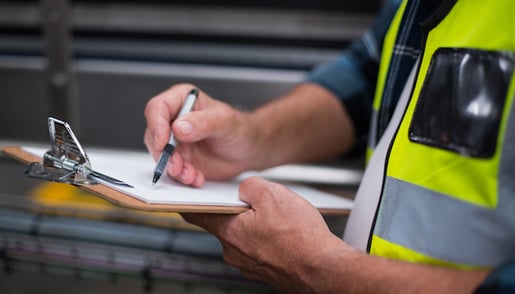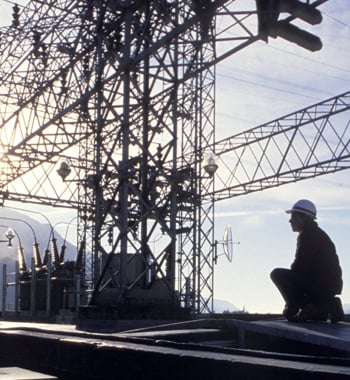Blackline Safety is a technology leader driving innovation in the industrial workforce through IoT (Internet of Things). With connected safety devices and predictive analytics, Blackline enables companies to drive towards zero safety incidents and improved operational performance. Blackline provides wearable devices, personal and area gas monitoring, cloud-connected software and data analytics to meet demanding safety challenges and enhance overall productivity for organizations with coverage in more than 100 countries. Armed with cellular and satellite connectivity, Blackline provides a lifeline to tens of thousands of people, having reported over 200 billion data-points and initiated over seven million emergency alerts. For more information, visit BlacklineSafety.com and connect with us on Facebook, Twitter, LinkedIn and Instagram.
Lone Worker Risk Assessment Checklist
Blackline Safety, Leader in Connected Gas Detection & Lone Worker Safety
August 26, 2020
 While some companies may have one type of lone working scenario to manage, others businesses may have many. Depending on the number and variety of lone worker situations involved, your company may need to perform multiple lone worker risk assessments to accommodate for the various circumstances faced by these higher-risk employees. These checklists are used when reviewing existing sites where people work alone and when setting up new sites involving lone workers. A lone worker checklist can also be modified periodically for use when verifying that the workspace still has effective safety protocols in place.
While some companies may have one type of lone working scenario to manage, others businesses may have many. Depending on the number and variety of lone worker situations involved, your company may need to perform multiple lone worker risk assessments to accommodate for the various circumstances faced by these higher-risk employees. These checklists are used when reviewing existing sites where people work alone and when setting up new sites involving lone workers. A lone worker checklist can also be modified periodically for use when verifying that the workspace still has effective safety protocols in place.
This post will provide the guidance you need to customize yours appropriately.
Step One: Clearly Label Each Lone Working Risk Assessment Document
This will help ensure that the appropriate risk factors are being identified, assessed and reviewed for each particular job type.
Step Two: Identify Hazards
In this section of your checklist, you’ll list the risk factors of multiple categories to be reviewed:
- Environmental: These risks include temperature and humidity, such as if a worker may be exposed to extreme heat (or cold temperatures). Additional examples include fire, extreme weather and more.
- Hazardous materials: Identify any hazardous conditions that will or could exist where the lone worker is operating and what the risks of each are. Burns? Spills that can lead to breathing problems? Exposure to dangerous or explosive gasses? Ensure all possible scenarios are covered.
- Equipment: What risks are inherent in the equipment being used on the site? What problems can occur with this type of machinery that can lead to injuries?
- Personal safety: Identify the hazards that exist. For example, are there animals present at the remote sites? Is there a risk of confrontation with potentially agitated members of the public? In each case, what challenges might exist with emergency communications and exits from the situation?
- Transportation: Will your lone workers have ready access to transportation when it’s time to leave the worksite? What about if a route is blocked or if your worker requires roadside assistance?
- Mental health: What levels of stress might an employee working alone experience?
- COVID-19: Sometimes lone workers interact with members of the public, presenting a potential risk for exposure to coronavirus.
- Additional considerations: Are there other circumstances or unique challenges faced by lone workers on your sites?
Step Three: Evaluate the Likelihood of Risks
In step two, you listed a broad range of hazards that can exist on your work sites, on the road or out in the community. In this step, you’ll want to prioritize them so you can focus more of your resources on hazards that are potentially more harmful and more likely to happen. It may be helpful to put risks into quadrants for prioritization purposes:
- Less significant harm/less likely to occur
- Less significant harm/more likely to occur
- Significant harm/less likely to occur
- Significant harm/more likely to occur
Armed with that prioritization knowledge, which hazards are most important to address first?
Step Four: Determine Costs and Complexities
Questions to ask about each of the hazards that require risk mitigation:
- How complex is it to implement the mitigation solutions?
- What will it cost?
In some cases, risks in the “significant harm/more likely to occur” category can be relatively straightforward to address. For example, your company may need to enhance equipment training sessions during the employee onboarding process and review them at annual meetings.
In addition to hazard mitigation costs, another option is consider lone worker safety monitoring technology that automates the process of watching out for your most vulnerable personnel.
At this point, your company will need to set a budget to invest in safety solutions and look at corresponding change management programs and any changes to operating protocols.
Step Five: Craft and Implement Risk Mitigation Protocols
Determine how much risk can be mitigated by training, whether that’s on a specific piece of equipment or in the overall work being performed. Create solid protocols and plans to ensure that each worker receives the appropriate training and that managers effectively monitor the progress of individual employees.
Once implementation of the new protocols are in place, check in regularly to ensure the new procedures are being carried out. Some action items can include:
- Follow-up with supervisors to make sure their employees are following the procedures
- Ask for feedback on what’s working and what is not
- Continue to update the risk mitigation protocols based on feedback, as well as new risks encountered
Step Six: Record Your Findings
Put your most significant findings in writing, sharing prioritized hazards along with how risks will be controlled. Avoid technical jargon and consider creating a simple rating system to clearly indicate the level of risk involved in a certain job — this could be numerical, for example, or color coded.
Finetune this document to create your lone worker safety policies and procedures. Run your policies and procedures past managers, lone workers and other key stakeholders in the company to make sure you’ve properly addressed important issues. When you’re ready, download and take advantage of our Lone Worker Policy Template.
Step Seven: Create or Update Your Employee Manual
After your lone working risk assessment is complete, it’s crucial to make sure that everyone has the information they need to comply, even people in the company who aren’t typically lone workers. To help make that happen, include the information in your employee manual, regularly review it with employees and update periodically as needed.
 Lone Worker Safety Solutions
Lone Worker Safety Solutions
Thanks to technological advances, there are automated lone worker safety monitoring solutions that can be implemented to help keep personnel safe, even in the most remote, challenging environments. Blackline Safety has elevated safety monitoring solutions for companies across the globe and throughout many industries — to make sure each lone worker has the confidence to get their job done and return home safely at the end of the day. Cloud-connected lone worker wearables leverage multiple, innovative technologies to ensure a seamless experience:
- Integrated cellular and satellite communications to automatically stream environmental and safety data to the Blackline Safety Cloud
- GPS and proprietary indoor location technology for enhanced safety monitoring and emergency response management
- Automatic incident detection for falls, no motion events and when an employee can’t respond to a check-in request
- A manual SOS trigger to call for help under any circumstance, even from a remote location outside of traditional wireless coverage
- Intrinsic safety certification for hazardous environments
- Cloud-hosted software to efficiently manage real-time emergency responses, control the configuration of lone worker wearables and manage compliance through automated reporting
These lone worker safety solutions can reduce the number of work-related injuries and fatalities and, if an accident occurs, can help to improve outcomes. Plus, lone workers can experience reduced levels of workplace stress, thanks to their enhanced connectedness with other employees.
Please contact us if you’d like to discuss how these solutions can help you monitor the wellbeing of your employees who work alone and respond instantly should something happen, to allow you to tackle your most critical safety challenges.
Get In Touch
Let’s start a discussion about your safety challenges and needs.
Related Blog Posts
Real-Life Incident: Mason’s Story — High H2S Exposure
November 25, 2025
“Shortness of breath. Request EMS to the location.” How Real-Time Gas Detection Led to a Quick Save Exposure to toxic gases can go from a strange...
Real-Life Incident: Gerry’s Story: Alone in the Boiler Room With CO
October 21, 2025
When a routine patrol became a potential gas poisoning tragedy, quick action and life-saving technology made all the difference. It was a routine...
Real-Life Incident: Brian’s Story - Containing a Texas Brush Fire
August 26, 2025
How quick action stopped a blaze from spreading, safeguarding nearby neighborhoods In a farming community in rural Texas with a population fewer...


